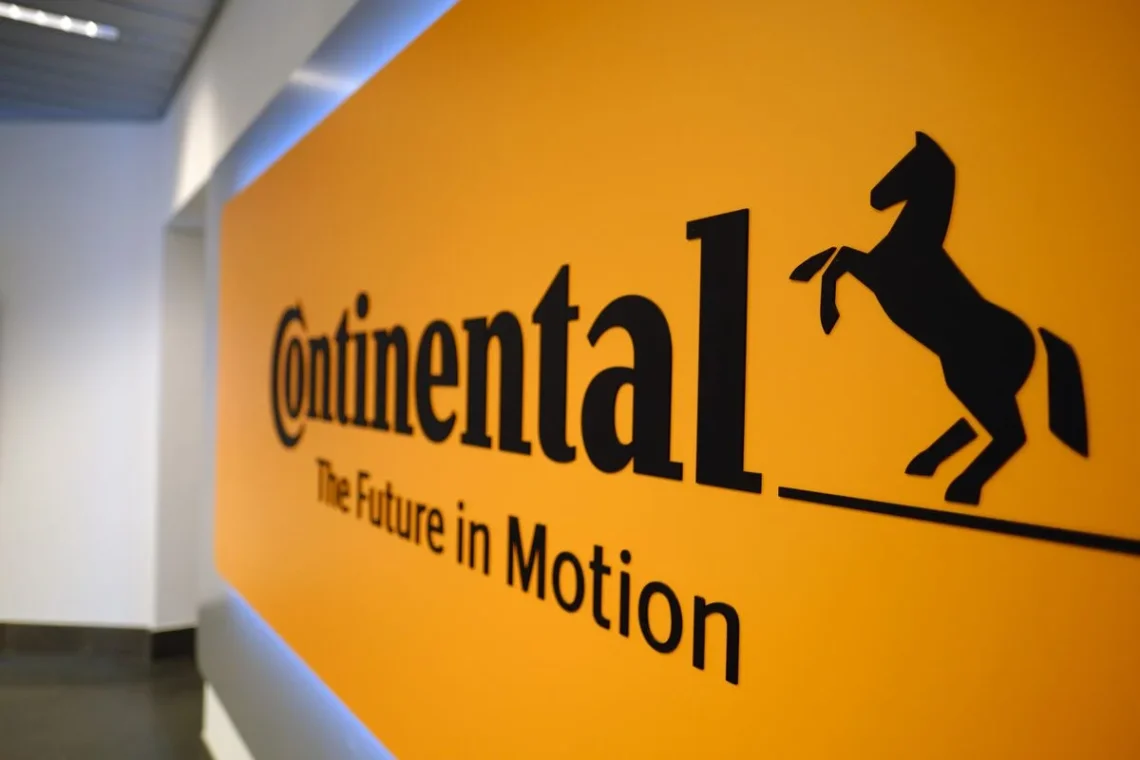Continental Data Graphics: In the aerospace, defense and manufacturing industries, the need for accurate, comprehensive, and up-to-date technical documentation is critical. Continental DataGraphics (CDG) has become one of the go-to firms in that space, offering services from illustrated parts catalogs to engineering design and digital publishing. This article explores who CDG is, what they offer, their history and ownership, the industries they serve, their global reach, and future trends and challenges.
1. Who Is Continental DataGraphics? Company Background and Ownership
Continental DataGraphics (CDG) is a company specialising in technical information solutions—including authoring, illustration, conversion and content management for engineering documentation. According to company-profiles, CDG is described as a “Provider of technical information to the aviation industry.”
Originally CDG was part of Continental Graphics Corporation and was acquired by The Boeing Company in 2000. Today CDG is often stylised as “CDG, a Boeing Company” and serves as a subsidiary within Boeing’s services offerings. Headquartered in Long Beach, California, CDG also maintains operations in the United Kingdom, India and other global locations.
In short: CDG is a long-standing specialist in technical documentation and engineering content services, with the backing of Boeing and a global footprint.
2. Key Services and Capabilities of CDG
The value proposition of CDG lies in the breadth and depth of their services. Some of the major offerings include:
- Illustrated Parts Catalogs (IPCs) and Maintenance Manuals: CDG produces detailed parts-listing and maintenance documentation for aerospace and defence platforms. This was a core service when Boeing acquired Continental Graphics.
- Engineering Design & Offload Services: CDG supports engineering-driven organisations with design, drafting, modelling, and certification‐related activitie
- Data conversion & digital publishing: Converting legacy documentation into digital formats, content management systems, interactive electronic technical manuals (IETMs), and authoring services.
- Software & Content Management Solutions: CDG develops and deploys platforms for document management, publishing automation, training media, and interactive content.
- Global governance model for offshore/onsite services: They have a model that allows integrated delivery across locations while clients supervise globally.
Thanks to these capabilities, CDG positions itself as a “strategic partner for engineering-driven organisations” rather than just a document vendor.
3. Industries Served and the Role of Documentation in Complex Equipment Support
CDG’s clients span sectors that demand extremely precise documentation and engineering support. These include:
- Commercial Aviation & Aerospace: Part of CDG’s core focus is detailed technical data for aircraft operations, maintenance and parts support.
- Defense & Space: With its documentation and engineering services, CDG supports defence platforms, space systems and associated logistics
- Manufacturing & Heavy Equipment: Some of CDG’s historical services extend into heavy equipment manufacturing, oil & gas, and other engineering‐intensive sectors.
Why this matters: In industries with complex machinery, high safety/regulatory demands and long lifecycle assets, accurate technical documentation underpins reliability, cost-effectiveness and regulatory compliance. CDG’s services support these critical needs.
4. Global Presence, Scale and Operational Excellence
CDG is not a small boutique—it has scale and global operations. Some notable facts:
- CDG is reported to have over 1,300 professionals across the U.S., U.K. and India.
- According to a company overview, CDG achieved revenue of approx $146.6 million in 2023 with global team size around 500+ (specific figures may vary).
- They operate major centres in Long Beach, California; have presence in the U.K.; and have offshore hubs in India.
- Governance model emphasises seamless global resourcing: clients don’t have to manage multiple offshore teams because CDG handles global coordination
These indicators highlight CDG’s ability to manage large-scale technical information projects on a global basis—important for OEMs and aerospace operators with worldwide operations.
5. Why CDG Matters: Strategic Value and Competitive Advantage
There are several reasons why CDG holds a strategic place in the aerospace & engineering ecosystem:
- Operational efficiency: By outsourcing technical documentation, design support and content conversion to CDG, manufacturers and operators can focus on core engineering while accessing scaled expertise.
- Lifecycle support: With assets like aircraft or defence systems often active for decades, having a partner like CDG helps maintain up-to-date documentation, parts visibility and regulatory compliance.
- Digital transformation: CDG’s emphasis on interactive manuals, content management systems and digital publishing aligns with current trends toward digitised technical data and Industry 4.0.
- Risk minimisation: Accurate, authorised technical documentation reduces safety risk, maintenance errors and regulatory exposures. CDG’s services therefore carry risk-mitigation value.
- Global consistency: For multinational OEMs or operators, using a globally capable partner ensures standardised outputs across geographies, languages and formats.
In essence, CDG isn’t just about making manuals—it’s about enabling complex engineering systems to operate, maintain and evolve efficiently.
6. Challenges and Future Outlook for Technical Documentation Services
While the outlook for CDG and similar firms is strong, there are also key challenges and trends to watch:
Challenges
- Digital disruption: As engineering and manufacturing embrace digital twins, real-time data analytics and augmented reality, traditional manual-based documentation services must evolve.
- Talent & workforce: Sustaining global operations with skilled technical authors, illustrators, engineers and tool specialists is resource-intensive.
- Regulatory complexity: Aerospace, defence and heavy manufacturing sectors face evolving regulations which documentation providers must continuously track and embed.
- Data security & IP: As CDG handles sensitive technical data for OEMs and defence clients, security and confidentiality are vital.
- Competition: Outsourcing, offshoring and automation mean CDG competes with low-cost providers, AI‐based authoring tools and in-house teams.
Future trends
- Interactive and immersive documentation: Manuals will increasingly incorporate AR/VR, interactive wiring diagrams and real-time content updates. CDG’s historical experience positions them well.
- Continuous publishing and live data: Instead of static manuals, documentation will become living assets—continuously updated as equipment evolves. CDG’s early work on online catalogs and digital content supports this shift.
- Analytics-driven insights: Documentation usage analytics (which content is used, where errors happen, where maintenance issues occur) will feed back into engineering and documentation. CDG’s content-management solutions will likely integrate analytics.
- Global operational models: As OEMs operate globally, documentation providers must maintain regional compliance, multilingual content, local regulatory knowledge and global coordination—CDG already reports presence in India, U.K., U.S.
- Sustainability & lifecycle cost focus: As operators focus on total lifecycle cost and sustainability, documentation solutions that reduce rework, errors and maintenance downtime become more strategic.
Given these factors, CDG is likely to remain relevant—but only if it continues to evolve alongside the engineering, manufacturing and digital-information landscapes.
Conclusion
Continental Data Graphics: Continental DataGraphics (CDG) is a heavyweight in technical documentation, engineering content services and digital publishing for aerospace, defense and manufacturing sectors. With over 50 years of experience, a Boeing ownership, global operations and a suite of specialized offerings, the company plays a vital role in enabling complex systems to operate safely, reliably and efficiently.
Whether you’re an OEM, airline, defense contractor or engineering organisation, understanding CDG’s capabilities can inform decisions around outsourcing documentation, managing engineering content and maintaining your lifecycle assets. As digital transformation accelerates, CDG’s evolution will be a key indicator of how documentation services must adapt to remain strategic rather than transactional.
FAQs
1. What does Continental DataGraphics (CDG) specialise in?
They specialise in technical authoring, illustrated parts catalogs (IPCs), digital content conversion, engineering support and lifecycle documentation for aerospace, defence and manufacturing industries.
2. Who owns CDG?
CDG is a subsidiary of The Boeing Company.
3. Where does CDG operate globally?
Their headquarters is in Long Beach, California (USA). They also have operations in the United Kingdom and India, among other locations.
4. Why is accurate technical documentation important for aerospace/defense?
Because equipment is complex, safety-critical, long-lived and regulated. Accurate manuals, parts catalogs and digital data reduce errors, maintenance downtime and regulatory risk.
5. How is CDG adapting to digital transformation?
They are focusing on interactive manuals, digital content platforms, continuous publishing, analytics, and global governance models to manage engineering content across geographieS.





